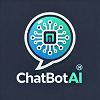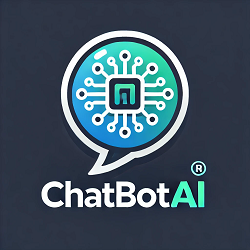By Dr. Dwi Suryanto
I. Introduction
Definition of AI Chatbot
An AI chatbot is a computer program powered by artificial intelligence, designed to simulate human conversations through text or voice. Utilizing technologies such as Natural Language Processing (NLP) and Machine Learning, these chatbots can understand, analyze, and respond to user input automatically. Beyond answering simple questions, AI chatbots provide complex solutions, deliver personalized experiences, and continuously improve their performance through interactions.
Brief History of Chatbots
The history of chatbots began in 1966 with ELIZA, a simple program created by Joseph Weizenbaum to simulate therapeutic conversations. ELIZA responded to user input using predefined patterns, although it lacked the ability to understand the context. In 1972, PARRY introduced emotion simulation, offering a more realistic conversational experience.
Advances in computing and artificial intelligence during the 1990s led to the creation of more sophisticated chatbots like ALICE and SmarterChild, which better understood natural language. The emergence of modern NLP technologies in the 2010s brought forth AI-powered chatbots like Apple’s Siri and Amazon’s Alexa, ushering in a new era of human-machine interaction. Today, chatbots continue to evolve with AI models like OpenAI’s GPT, enabling more natural and contextual conversations.
Relevance of AI Chatbots in the Digital Era
In today’s digital age, AI chatbots are indispensable across various aspects of life, particularly in business and customer service. Their ability to provide quick and responsive support makes them an ideal solution for companies looking to enhance customer experiences. For instance, in e-commerce, AI chatbots assist customers in finding products, answering queries, and completing transactions.
Moreover, chatbots serve as effective tools in education, offering quick answers to students’ questions and providing critical information in emergencies, such as during pandemics. With the growing need for efficiency and speed, AI chatbots empower businesses and individuals to remain productive through automation driven by cutting-edge technology.
The widespread adoption of AI chatbots highlights their ability to meet human needs effectively and flexibly, making them highly relevant for addressing future challenges.
II. The Technology Behind AI Chatbots
Machine Learning and Natural Language Processing (NLP)
Modern AI chatbots rely on two core technologies: Machine Learning (ML) and Natural Language Processing (NLP). Machine Learning enables chatbots to recognize patterns and improve their responses over time. The more data they process, the smarter they become in understanding conversational contexts and delivering relevant answers.
NLP, on the other hand, allows chatbots to understand human language. It works by breaking down user inputs into linguistic components such as words, phrases, and meanings. This process involves techniques like tokenization, syntactic analysis, and entity recognition to accurately interpret user intent. For example, when a user asks, “Is the store open at 9 a.m.?”, an NLP-powered chatbot understands the question relates to store hours.
Integration with Other Systems
AI chatbots rarely operate in isolation. They are often integrated with systems like Customer Relationship Management (CRM) platforms, e-commerce platforms, and even Internet of Things (IoT) devices. This integration allows chatbots to access real-time information and provide comprehensive solutions.
For instance, a chatbot connected to a CRM system can help sales teams track customer prospects. In e-commerce, chatbots linked to inventory systems can inform customers about product availability, offer recommendations, and facilitate seamless payments.
Role of Data in Enhancing Chatbot Performance
Data is the lifeblood of AI chatbots. With sufficient data, chatbots can be trained to understand diverse conversational scenarios and predict the best responses. They rely on two main types of data:
- Historical data: Past conversations that help chatbots learn interaction patterns.
- Real-time data: Direct input from users to refine responses and improve user experience.
Training chatbots involves techniques such as supervised learning, unsupervised learning, or reinforcement learning, depending on the application’s requirements. Successful AI chatbots depend not only on sophisticated algorithms but also on the quality and quantity of data used to train them. This is why major companies invest heavily in data collection and processing to ensure their chatbots remain effective and relevant.
III. Benefits of AI Chatbots
Time Efficiency and Cost Reduction
One of the primary benefits of AI chatbots is their ability to save time and reduce operational costs. By automating tasks such as answering common questions, chatbots can replace much of the manual work previously done by human agents. This allows businesses to allocate resources to more strategic areas.
For example, in customer service, chatbots can handle hundreds or thousands of conversations simultaneously, reducing customer wait times and enhancing satisfaction. As a result, companies can cut down on the need for large customer service teams while maintaining high-quality service.
Enhanced Customer Service
AI chatbots are designed to provide fast, responsive, and consistent experiences. Unlike humans, they do not tire and are available 24/7. This is particularly advantageous in industries like e-commerce and banking, where customers often require assistance outside regular business hours.
Additionally, chatbots offer personalized experiences. By analyzing customer data, they can recommend products or services based on user preferences and interaction history.
Personalization in User Experience
The ability of AI chatbots to understand and analyze customer behavior makes them highly effective in delivering personalized experiences. For instance, chatbots can remember a user’s purchase history and provide tailored recommendations. This not only boosts customer satisfaction but also fosters long-term loyalty.
Continuous Availability
A standout feature of AI chatbots is their ability to operate 24/7 without interruption. Customers can access support at any time, making chatbots invaluable for businesses with a global audience. This round-the-clock availability enhances customer trust and engagement.
IV. Types of AI Chatbots
Rule-Based Chatbots
Rule-based chatbots operate based on predefined rules. These chatbots can only respond to specific inputs that align with their programmed scenarios. While simple, they are effective for handling specific tasks such as answering Frequently Asked Questions (FAQs).
Example: A customer service chatbot that responds to queries like “How do I return a product?” or “What are your operating hours?”
AI-Powered Chatbots
AI-powered chatbots leverage artificial intelligence to understand the context and intent behind user questions. Compared to rule-based chatbots, they are far more flexible and capable of providing natural, dynamic responses. Using technologies like NLP and Machine Learning, these chatbots learn from previous interactions to improve accuracy.
Example: A chatbot on an e-commerce platform that helps customers choose products based on their preferences.
Hybrid Chatbots
Hybrid chatbots combine the functionalities of rule-based and AI-powered systems, offering the best of both worlds. These are often employed by businesses that require automation for straightforward tasks but also need AI to handle more complex scenarios.
Example: A hybrid chatbot that addresses simple FAQs while directing complex queries to human agents when necessary.
Voice-Based Chatbots
With the rising popularity of voice assistants like Alexa, Siri, and Google Assistant, voice-based chatbots are becoming increasingly relevant. These chatbots enable users to interact via voice, making them convenient tools for applications like navigation or information retrieval.
Example: Alexa helps users play music, control smart devices, or check the weather with simple voice commands.
The variety of AI chatbots provides businesses and individuals with flexible options that can seamlessly integrate into diverse scenarios and industries.
V. Implementation of AI Chatbots
Applications Across Industries
AI chatbots are now widely adopted in various industries, including e-commerce, healthcare, and banking. In e-commerce, chatbots assist with product recommendations, checkout processes, and answering customer inquiries. In healthcare, they help patients with initial consultations, medication reminders, and symptom information.
In banking, chatbots simplify tasks like balance checks, fund transfers, and reporting suspicious activity. Their efficiency enables businesses to reach more customers at a lower cost.
Steps to Integrate Chatbots
Integrating chatbots into a business involves several key steps:
- Identify Requirements: Define the specific goals of the chatbot, such as customer service, marketing, or sales.
- Choose the Right Platform: Select a platform that supports integration with your business systems, such as WhatsApp, Facebook Messenger, or a custom application.
- Testing and Deployment: Conduct rigorous testing to ensure the chatbot functions as expected before launching it publicly.
- Maintenance and Updates: Regularly update the chatbot based on customer feedback and data to ensure optimal performance.
Successful Case Study
A notable example of successful chatbot implementation is KLM Royal Dutch Airlines, which uses chatbots to provide flight information, check-in reminders, and delay updates to customers. This approach has significantly improved customer satisfaction while reducing the workload on customer service teams.
VI. Challenges in Using AI Chatbots
Understanding Context and Language Complexity
One of the main challenges AI chatbots face is understanding the complexity of human language. Human speech is often ambiguous and nuanced, making it difficult for chatbots to grasp the true meaning. For example, sarcasm or idiomatic expressions are commonly misunderstood.
Privacy and Data Security Concerns
Chatbots operate by accessing user data, which often raises concerns about privacy. Without robust data protection measures, there is a risk of data breaches or misuse of information. Businesses must ensure strong encryption and compliance with privacy regulations like GDPR.
Dependency on High-Quality Data
AI chatbots rely heavily on high-quality data for training. If the data used is inadequate or biased, the chatbot’s responses may become inaccurate. This can erode user trust in the technology.
VII. The Future of AI Chatbots
Advancing Technology
In the future, chatbots are expected to become even more sophisticated with the adoption of Generative AI models like GPT-4 and beyond. These technologies will enable chatbots to produce more human-like and contextual responses. Additionally, integrating chatbots with metaverse platforms and IoT devices will open up new possibilities for immersive and interactive experiences.
Role in Metaverse and IoT
In the metaverse, chatbots can act as virtual guides, helping users navigate digital environments. In IoT, chatbots can be used to control smart devices, such as adjusting home temperatures or monitoring security, all through voice commands.
New Applications
Industries previously untapped by chatbot technology, such as personalized education and legal consulting, are beginning to explore their use. This presents significant opportunities for businesses to innovate and leverage chatbots as versatile tools across multiple sectors.
VIII. Conclusion
AI chatbots have proven to be revolutionary technology, transforming how we interact with machines. From enhancing customer service to streamlining business processes, chatbots provide efficient, personalized, and scalable solutions. However, like any technology, their success depends on how well we address the challenges and harness their potential. As they continue to evolve, AI chatbots will play an increasingly vital role across industries, delivering greater value and impact.
About the Author: Dwi Suryanto
Dwi Suryanto, Ph.D., is a leadership and management expert, as well as a self-taught programmer. With certifications in Generative AI, LLM Apps, and AI Agents, Dwi combines his leadership expertise with cutting-edge AI technology. He also holds certifications in ChatGPT, AI for Business, and Python Programming. Through his unique blend of skills, Dwi empowers businesses and individuals to thrive in the era of digital innovation.

